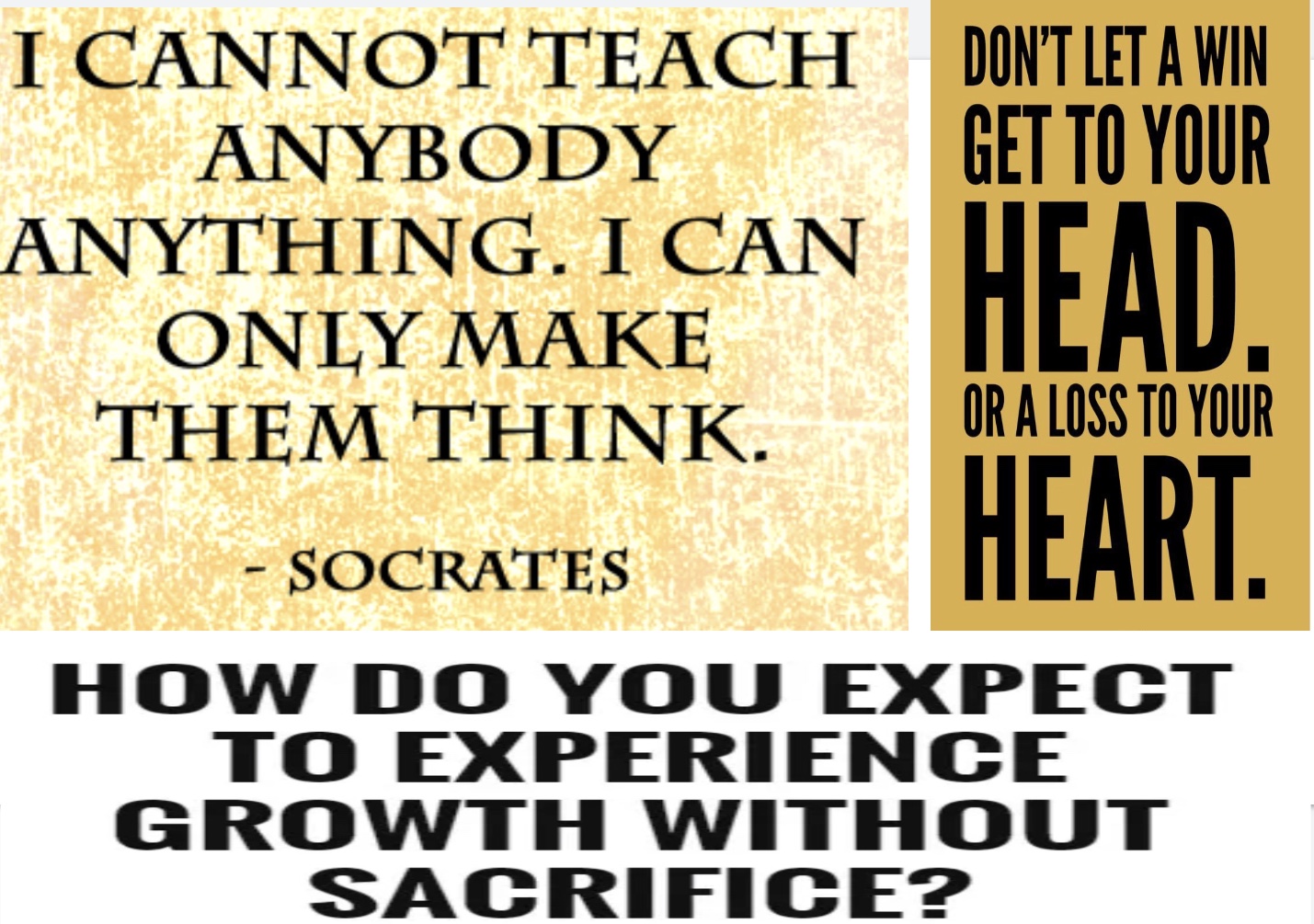
Coaches don’t talk biomechanics & science to the hitters. That is the “work” done behind the scenes.
With hitters, it is best to just focus on “CLEANER MOVEMENT PATTERNS”. And cleaner movement patterns happen because the coach can connect the dots by merging the different disciplines.
Behind the scenes, in order to CONNECT THE DOTS and HELP HITTERS REACH THEIR POTENTIAL, somebody on staff has to be able to MERGE THE DIFFERENT DISCIPLINES to come up with the “swing attractors”, cues & drills, and hitting gadgets used by hitters to “clean up” their movements and maintain their “true swing feel/groove”. The different relevant disciplines are:
- Functional Movements Specific to Hitting a Baseball;
- Strength & Conditioning;
- Motor Learning, also known as the Degrees of Freedom Challenge;
- Perceptual Motor Skills – Visual Perception & Processing;
- Biomechanics; and
- Scientific Principles specific to Hitting a Baseball.
MERGING THE DIFFERENT DISCIPLINES
Many have attempted to explain hitting through a specific lens or from their certain area of expertise, BUT FEW, IF ANY have merged the different disciplines TOGETHER WITH SPECIFICITY FOR THE UNIQUENESS OF THE SKILL OF HITTING AN 100 M.P.H. 4-SEAM FASTBALL. Trying to copycat research and development from golf does not work because the BASEBALL SWING IS UNIQUE unto itself because of time constraints, visual processing, rate of force development, etc. There is no other skill challenge like hitting a 100 m.p.h. fastball on one pitch then the next one be a 80 m.p.h. curveball; thus, there is no greater challenge than creating the learning environment that facilitates athletes from going from “good to GREAT”.
Terms and ideas from the different disciplines that apply specifically to “merge” with hitting are: Swing Attractors, Functional Movement Coordination, Skill Acquisition, Degrees of Freedom, Functional Swing Variability, Swing Coordination Consistency, Coupling between Swing Phases, Perceptual-Motor Skills/Visual Processing, Motor Synergies Sequencing, Linkage between Body Segments, Complexity of Movement, Discovering the Right Kind of Constraints, etc.
In order to merge the different disciplines, one must have the background, experience and knowledge to “see” hitting through multiple lens and all of the relevant academic disciplines. When I coached, I viewed it as an opportunity to go into the “hitting lab” everyday to test theories of functional movement protocols, biomechanics, ideas and beliefs regarding motor learning, etc. —in order to figure out the KEY SWING ATTRACTORS that apply to every great hitter I’ve ever studied.
Testing thousands of hitting devices and gadgets, as well as self-making thousands of gadgets myself, was so much fun to bring into the “hitting lab” to help our hitters feel a specific movement. In talking to great hitters everyday and keeping journals and binders for over 20 years, helped me preserve and document the process of their journeys from mediocrity to excellence.
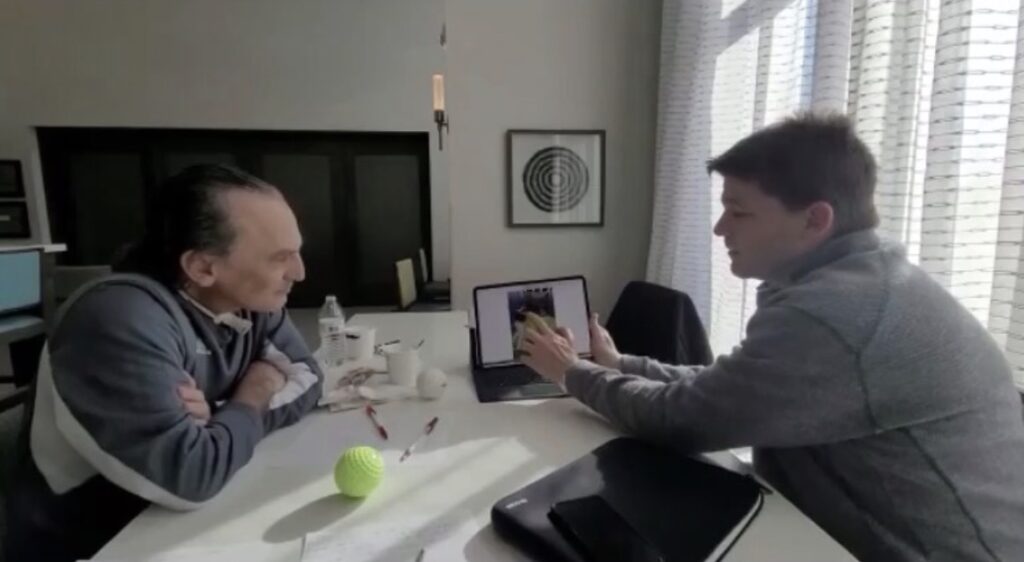
Over the past 5 years that I have not coached, I’ve been able to stay focused on this project, and I’ve had the opportunity to compare “notes” and have prolonged visits and conversations on this topic with other hitting coaches, biomechanist, PHD professors, experts in their fields, doctors and therapist in the field of movement, etc. All of these experiences have resulted in the ability to merge the different disciplines into a complete hitting system – SPECIFIC TO THE UNIQUENESS OF HITTING A BASEBALL AT THE HIGHEST LEVEL.
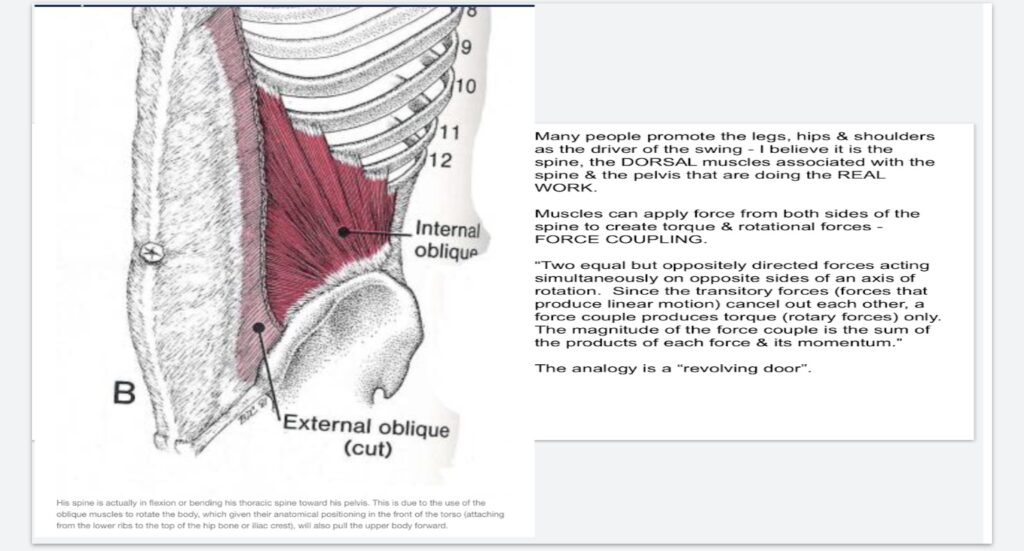
DIFFERENT PHASES OF SWING
In the baseball “coaching world” it is close to impossible to get any group of 10 random coaches to agree on something as simple as what the 5 phases of a baseball swing consists of in terms of functional movement.
- “Get your foot down” violates the scientific principle of proximal to distal, but is still such a frequent “cue” heard in most all MLB vocabularies.
- Why is separation or differential between the hips and shoulders an objective measurement still used by MLB – with baseball minds not giving due regard to the rate of force development?
- Why the fascination with where the barrel “finishes” and its focus in so many drills when everybody knows or should know that the ball is in contact with the bat for .005 (1/2 of a millisecond) and applying force after contact is useless or focusing on arm extension or a long follow through is flawed thinking?
- What is the relevance & purpose of slotting the rear elbow to the biomechanics of the baseball swing, and why do so many MLB cues and drills focus on this move?
- Why doesn’t MLB technology and data distinguish between the different “qualities” of rotation and differentiate between and account for the great hitters movement and coordination through ALL planes of motion?

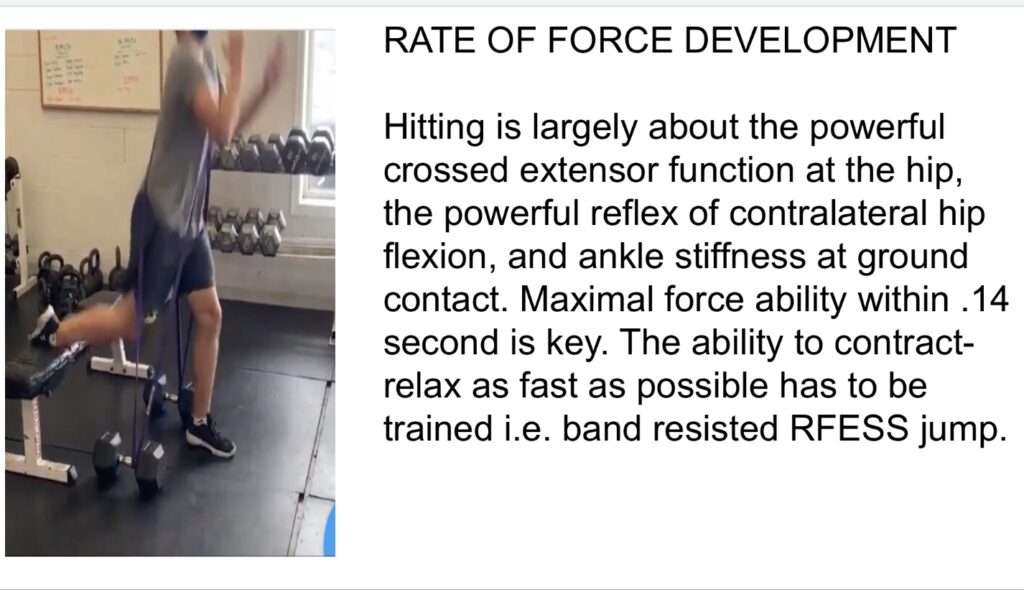
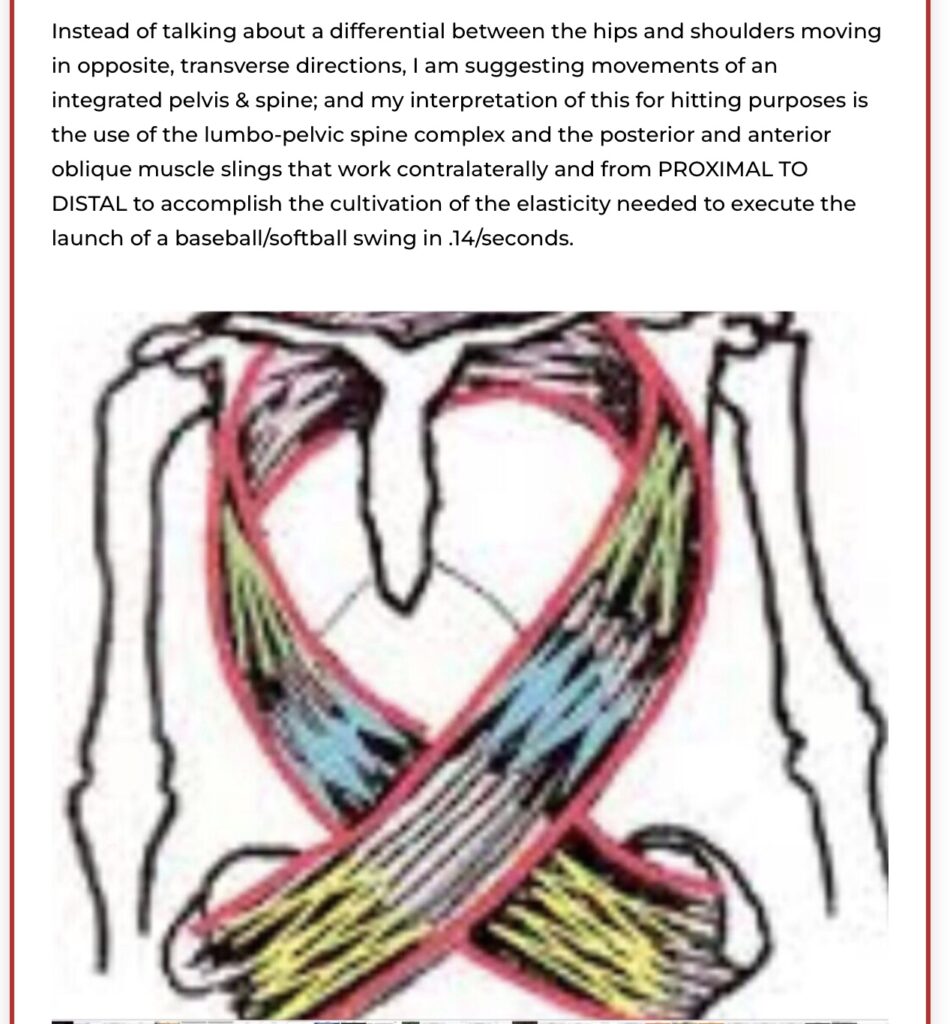
The different phases of the swing should be identified and described in such a way that they comply with scientific principles that specifically apply to the TIMING & SYNCHING BETWEEN EACH PHASE SO THE HITTER CAN COORDINATE & COUPLE SEAMLESSLY.
We have been discussing in previous articles on this site the swing phases and underlying scientific principles. Because I believe in the scientific principle of “proximal to distal” and because I believe the lumbo-pelvic spine complex is the center of all movements in hitting, and furthermore can coordinate the TIMING & SYNCHING BETWEEN EACH PHASE, I list and describe the SWING PHASES ACCORDINGLY.
My emphasis is on the lumbo-pelvic spine complex and the lack of emphasis on the feet. I believe great hitters mostly self-organize in the areas involving the “distal” components of feet and legs or arms and hands, and that’s where each of their individual “style” shows up; but only after getting the lumbo-pelvic-spine complex right first. The swing phases I use are:
- PELVIS LOADING – HINGING THE PELVIS,
- INTEGRATING THE PELVIS & THE SPINE – POSTURE,
- COILING THE PELVIS,
- MOVING THE MIDDLE,
- CREATING ELASTICITY,
- QUALITY ROTATION WITH ALIGNMENT OF THE BARREL IN RELATIONSHIP WITH THE SPINE.
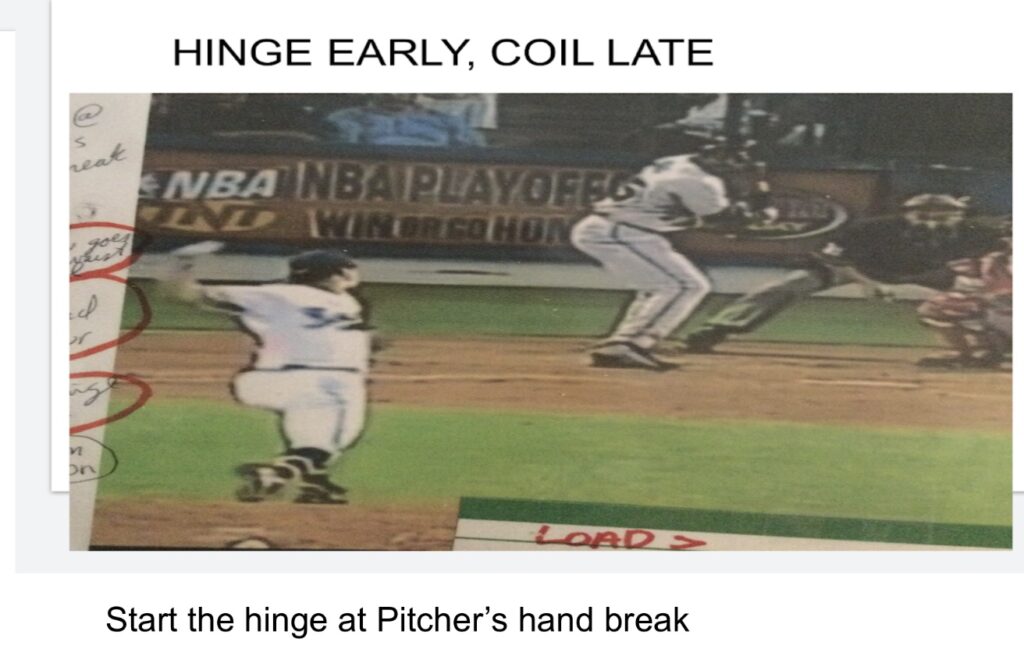
With the merging of the different disciplines as suggested to create the swing phases and then focusing and training coupled movements between them, becomes a much easier way to detect “flaws” or inefficient movement patterns. FLAWS seen routinely in MLB hitters just in how they hinge or coil that cause them to go in and out slumps are so simple to avoid. For example, a hitter will be going good then all of a sudden a slight change in their hinge/coil sequence and struggles ensue. And then after constant tinkering with his swing mechanics, it becomes “mental” and then becomes a prolonged slump.
“Coiling before hinging” is so easy to monitor and detect to make sure hitters have consistency in functional movement. Being keen to the different planes of movement is also easily monitored and detected between the hinge and coil. Both hips staying level while the front tries to anteriorly turn results in SWAY; or a posterior turn of the back hip (show your back butt cheek to the pitcher) results in COUNTER ROTATION. IOW, carefully watching, monitoring and detecting movement variations between the phases of the swing will 95% of the time correctly diagnosis and fix it.
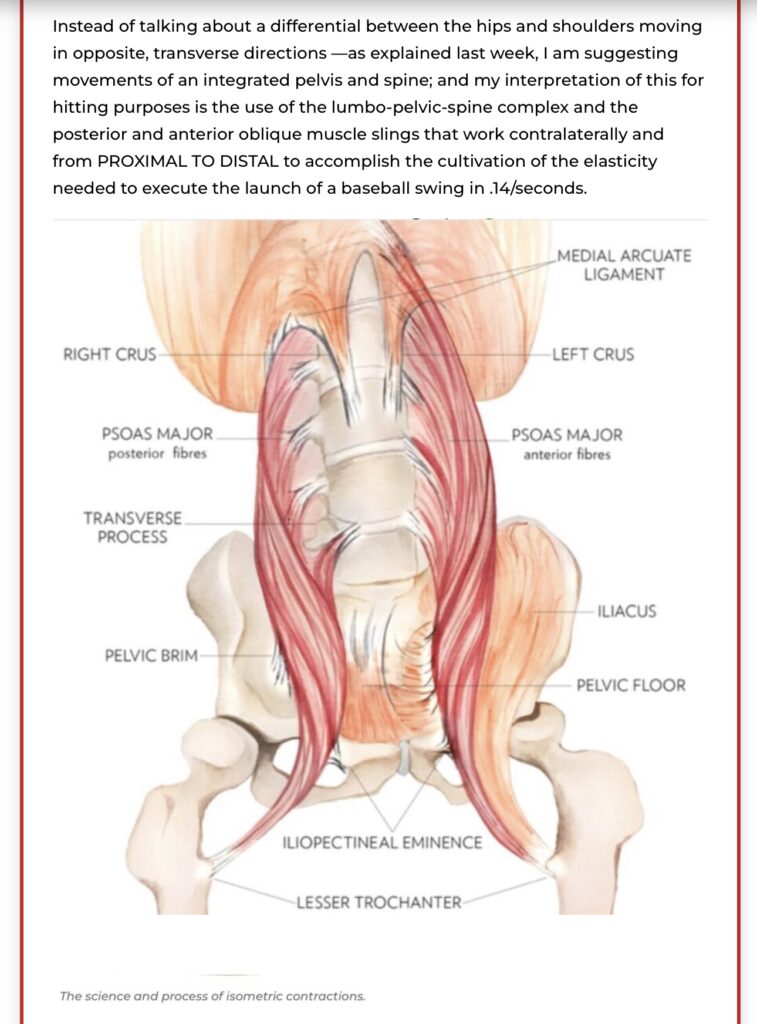
DEGREES OF FREEDOM CHALLENGE
HOW CAN A HITTER MASTER THE DEGREES OF FREEDOM CHALLENGE OF MOVING HIS/HER BODY WITH CONSISTENCY?
- By coordinating the swing and synching up the timing between each swing phase.
- By knowing what the 3 swing attractors are and how/when to apply them.
- By having a reliable training protocol.
The goal is to produce a CONSISTENT SWING that the hitter feels and can rely on throughout the season. The hitter has a reliable training protocol that keeps his SWING FEEL TRUE. A swing that creates “little guy power” without over swinging or uppercutting, and a swing that has timing variability to all parts of the zone and against all different types of pitches and pitchers is the result of getting the details discussed herein right.
This is a degrees of freedom challenge combined with understanding the movement patterns and understanding how to give the hitter only what he needs: 3 SWING ATTRACTORS, 4 CUES, & 5 HITTING GADGETS. “3-4-5”.
How does a MLB hitter use his perceptual-motor system to determine the combination of functional movements in order to hit a 4-seam 100 m.p.h. fastball when the body has so many degrees of freedoms options? Another scientific principle provides the answer.
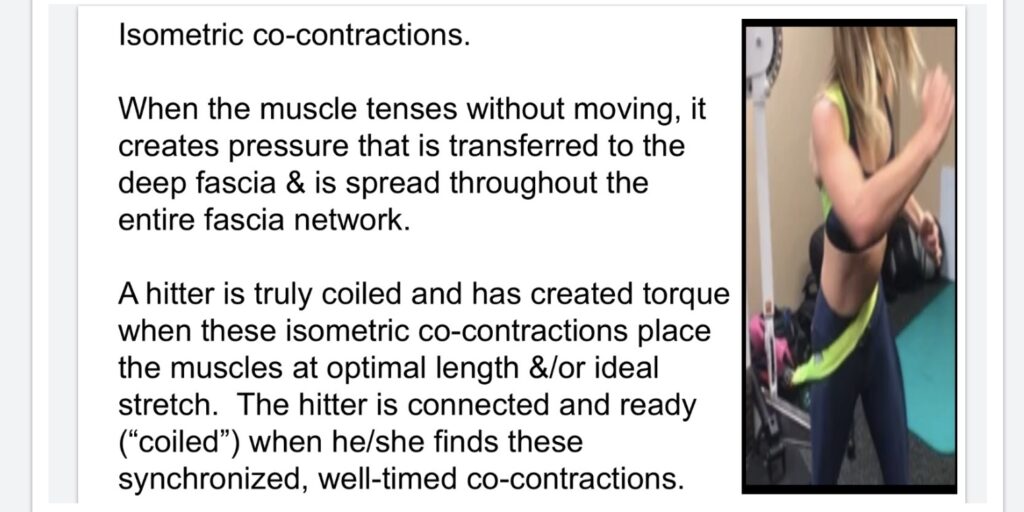
Hitting a baseball at the MLB level is the most difficult thing to do in all of sports. It is not hard because of the challenge to properly sequence the different phases of movement of the swing; IT IS HARD BECAUSE THE HITTER MUST COORDINATE THE TIMING OF THE DIFFERENT PHASES OF THE MOVEMENTS OF THE SWING BASED ON HIS PERCEPTIONS/VISUAL PROCESSING.

Proximal to distal. Isometric contractions. Rate of force development. Functional couplings between swing phases. These are the principles that lead to a swing that is both powerful and timed correctly and consistent throughout the entire season. Creating protocols that show how these principles WORK IN A TRAINING/PRACTICE ENVIRONMENT is key to the hitter’s growth & development.
Once you have these principles and concepts in place in a training/practice protocol, then actually implementing them in practice/training should only involve 4 simple “cues”/drills and 5 homemade gadgets. Then during the season, coaches are tasked with making sure the hitter maintains the feel of the functional coupling and coordination between the swing phases, and can monitor the hitters with simple video taken with a cell phone.
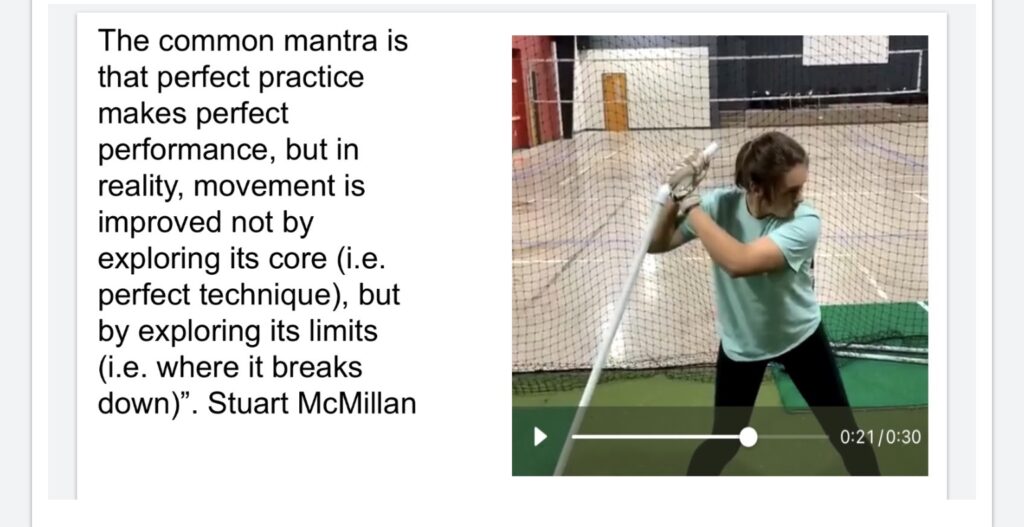
FUNCTIONAL VARIABILITY IN PRACTICE and mastering the degrees of freedom challenge into consistency can be done by understanding and implementing movement coordination with the right FOCUS: cues and drills and gadgets that engrain functional coupling and coordination between swing phases.
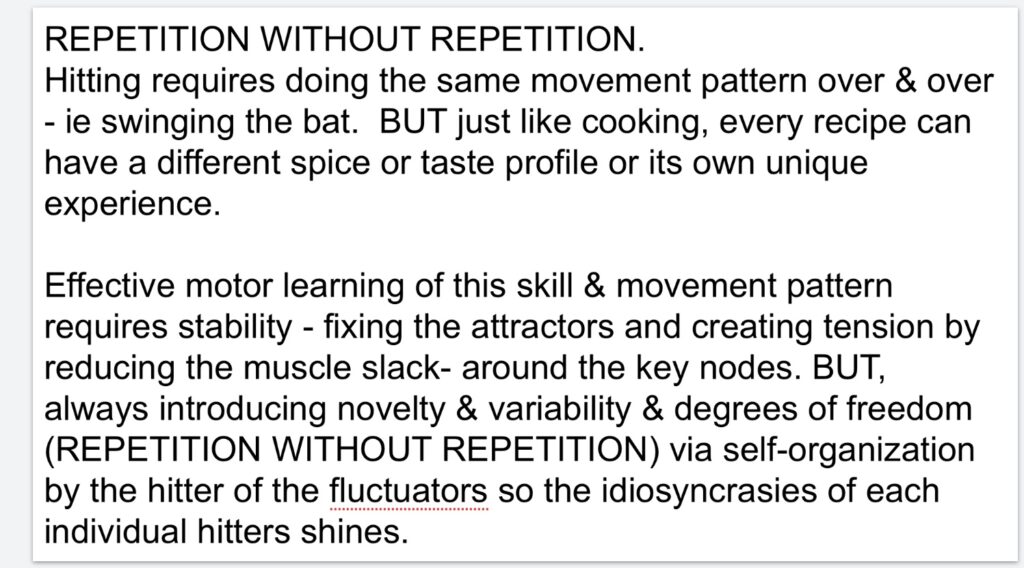
PUTTING IT ALL TOGETHER
Step 1 is identifying and understanding what the 3 SWING ATTRACTORS ARE, and how & when to apply them.
Step 2 is discovering the right constraints/drills over separate parts of the body, and most optimally, using functional movement coupling that “ties together” or “overlaps” or “transitions” between the swing phases.
Step 3 is to facilitate the above in practice & training and teach it with 4 simple drills and 5 homemade hitting gadgets.
As a coach: put your hitters in the right learning environment, with the right drills and gadgets, with some instruction, oversight & supervision. Give them some objective data and feedback and show them some slow motion video review and analysis. Make sure their movements are checking the boxes of the SWING ATTRACTORS.
PURSUE EXCELLENCE & WIN THIS PITCH!
About the Author
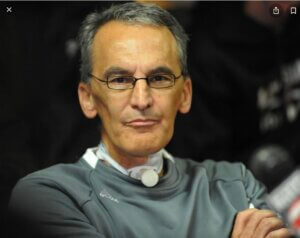
Mike Lotief coached 17 successful years as either the head softball coach or co-head softball coach with his wife Stefni Whitton Lotief at the University of Louisiana from 2002-2017 with an overall coaching record of 731-176 (80.6 winning percentage). Every season, the Ragin Cajuns softball team advanced to the NCAA tournament and also advanced to three (3) Women’s College World Series (2003, 2008, 2014) and from 2012-2016 advanced to five (5) straight NCAA Super Regionals. Coach Lotief produced over 40 All American selections and his 2017 team lead the nation in scoring and was ranked in the Top 10 in home runs, slugging percentage, on base percentage.
The coach is a cancer survivor (twice) and was the first person in the U.S. to receive the Pro Trach device. Mike and Stefni spearheaded and raised the funding to build the new softball stadium in 2009 and the new softball indoor hitting facility in 2015. They are proud parents to Chelsea, who played softball and graduated from the Univ. of Louisiana in 2018, and Andrew, who is a junior at Louisiana studying Mechanical Engineering.
Previous Articles in this Series
- The Mental Swing Attractors: Failure Cannot Break You (Nov. 11, 2021)
- Training Insights: “Swing Attractors” by Coach Mike Lotief… the Flaws of Pelvic Loading (Nov. 9, 2021)
- The Mental Swing Attractors: Push Yourself… You Don’t Have to Be #1 to BE #1! (Nov. 4, 2021)
- Training Insights: “Swing Attractors” by Coach Mike Lotief… Pelvis Loading, Part 2—The Planes of Movement (Nov. 2, 2021)
- The Mental Swing Attractors: Remove the Rope from Your Ankle & Get Rid of the Limiting Beliefs! (Oct. 28, 2021)
- Training Insights: “Swing Attractors” by Coach Mike Lotief… Pelvis Loading, Part 1—It’s All in the Hips (or Somewhere Deep Below) Oct. 26, 2021
- The Mental Swing Attractors: Champions are Developed by Devotion & Discipline! (Oct. 21, 2021)
- Training Expertise: “Swing Attractors”… the Secrets of Power Hitting by Coach Mike Lotief (Oct. 19, 2021)
More About Mike Lotief
- Why Michael Lotief is a Legendary Coach? by Jay Patel
- The Secret To Michael Lotief’s Success. By Jay Patel
- Michael Lotief Fights for Rajin’ Cajuns by Graham Hays ESPN
- Michael Lotief: Taking His Sport to New Heights by Neha Kapoor
- For the Love of the Game: A Look at Ragin’ Cajun Softball’s Power Couple
- How Louisiana-Lafayette’s Michael Lotief Develops Hitting Gems by Graham Hays ESPN
